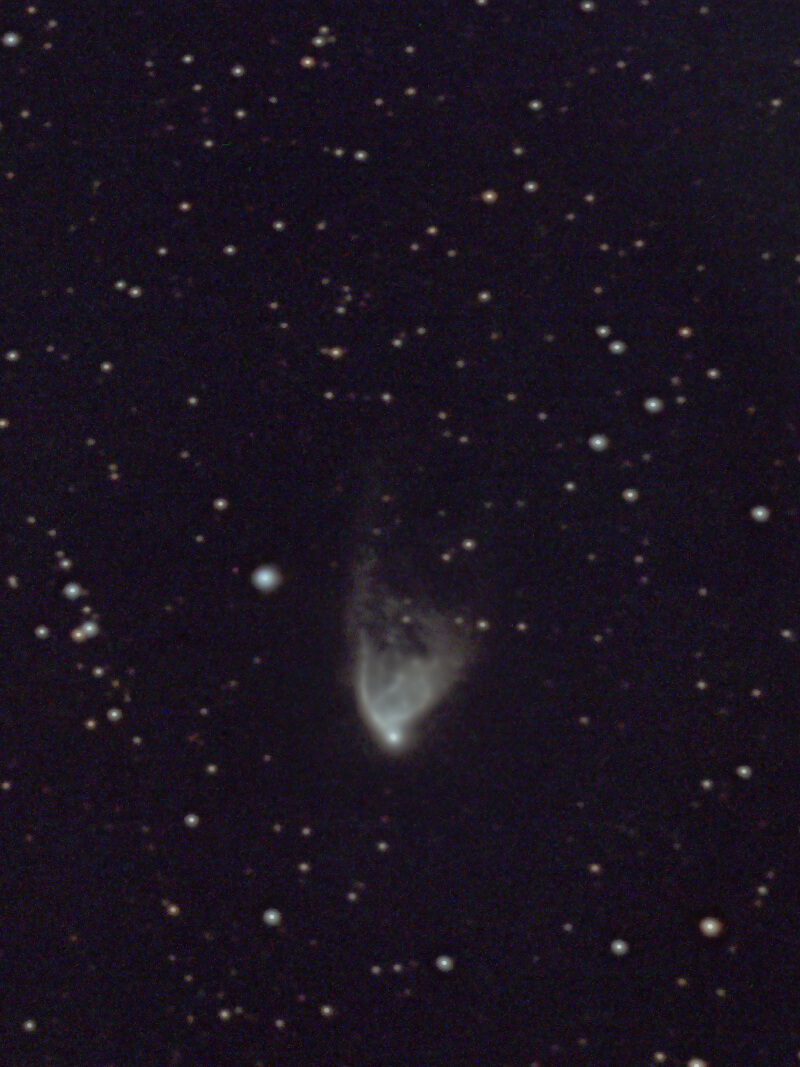NGC 2261 (Hubble's Variable Nebula)
Although most targets in the sky will show little to no change, some systems are evolving on timescales that are visible. In particular, Hubble's Variable Nebula (NGC 2261) reflects and scatters light from the star R Monocerotis (R Mon). R Mon is believed to be an exceptionally young star system. As these star systems settle into the longest phase of a star's existence -- the main-sequence phase -- they often expel large amounts of gas and dust. The nebula is the gas and dust that is visible from this process in this young system. Because there are multiple stars orbiting each other at the heart of this system, the gas and dust gets twisted into thicker and thinner regions. As those regions spread away from the stars, careful photography can reveal ripples of light that evolve over weeks emanating from the stars. Göran, et al (2020) have conducted some of the most recent research on this system.
Another way future users of the observatory could contribute to understanding this star system is through the Big Amateur Telescope. This is a collaboration of many astronomers across the globe who bring together data from multiple telescopes to create incredibly detailed images. In the case of NGC 2261, they created an animation showing how the ripples of light move through the nebula over the span of 7 months. This sort of dedicated effort can only be achieved through the collective work of many skilled astronomers. Cerritos College students could be among their ranks!
Below is a color image of the nebula that I created from data taken on 2024-01-10 and 2024-01-13. I used the SBIG STXL-6303 camera with the Celestron C14 telescope to take images with the L, R, G, and B filters. The images in each color channel were aligned and stacked, and then the separate channels brought together to make the color image shown below. North is at the top and east is at the left.


Stay Connected